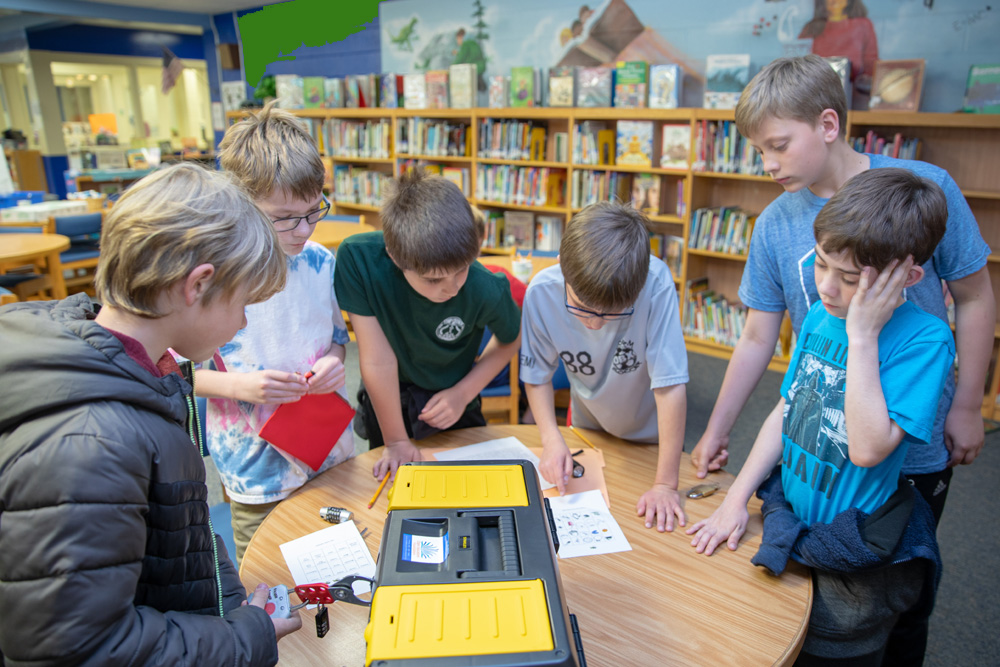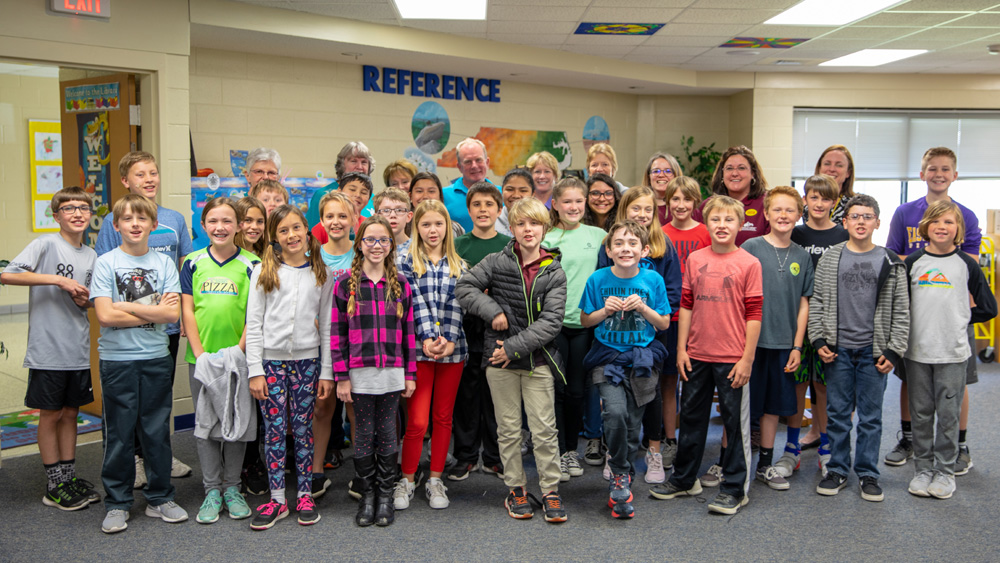N.E.S.T. Achievements at
Kitty Hawk Elementary School 2017-2018
The big WIN of this program was the impact made on over 500 young minds…who are now educated, enthusiastic and compassionate about our beautiful sea turtles.
It was a tremendously successful first year for N.E.S.T.’s sea turtle education pilot project. The teachers were excited and engaged, the library became the center of activity and the administration provided enthusiastic support. We await direction from the Superintendent’s office to begin work with our next Dare County school.
Activities in library:
• Kindergarten: studied hatchlings and the role of the Sargasso Sea in their survival. We studied camouflage in different species and noted how turtles blend into the seaweed. We completed coloring sheets about different turtle types, focusing on loggerheads. Talked about pollution and trash and made turtles out of reused bottle caps. Watched “Womble’s Rescue” video from NC Aquariums.
• 1st grade: studied habitat of sea turtles at different life stages, cut/glue/color loggerhead after watching a movie about their life cycle and environment. Studied sea turtle food chain and made a replica.
• 2nd grade: cut/glue/color loggerhead after watching a movie about their life cycle and environment, cut apart and arrange the food chain of a sea turtle,and wrote a biography of a sea turtle after reading and taking notes on One Tiny Turtle. Listened to then took an AR(advanced reader) test on Follow the Moon Home book.
• 4th grade: Big 6 research project using One Tiny Turtle book set and a video about the different dangers that sea turtles face; Field Trip to the aquarium and STAR Center, make memes about sea turtles. Studied 6 main threats to sea turtles and voted as a class to choose “clean beach and reduce trash”. This was their action plan for the challenge posed to them at the aquarium.
• Name the Turtle school-wide contest for front hall art enhancement. Over 300 entries. The winning name was Seaweed!
• N.E.S.T. Loggerhead Breakout EDU game was written and published. Breakout EDU is a website that offers learning games to educators around the world. The games use critical thinking, collaboration, creativity, and communication to solve various puzzles to unlock locks and boxes. Ours was written in collaboration with N.E.S.T. experts and included accurate scientific information on the loggerhead turtle. Most classes in 2nd/3rd/4th/5th played the Breakout game. We also hosted the National Humane Education Society members and had them try it.
• Science learning center was set up with books, posters, life cycle toys, and information cards. The center remained in the library all year and was open to all students and guests.

Girls at Kitty Hawk Elementary in a race with other groups work to solving the N.E.S.T. Loggerhead Sea Turtle Breakout Box

The boys work hard to solve the game questions
Through classrooms:
• 4th grade Mrs. Haight’s English Language Arts classes (about half of 4th grade), wrote persuasive essays asking local restaurants to stop giving straws out unless requested. They printed the letters and sent them to local restaurants. Social Studies curriculum: 4.G.1.2 Explain the impact that human activity has on the availability of natural resources in North Carolina. The student will understand: When preventable measures are not taken, human activity may result in consequences for the environment and people of a region.
• 4th grade also made posters about the danger of straws to a sea turtle and organized an Earth Day beach cleanup in Kitty Hawk, attended by some local families.
• Art room: the art teacher and all the 4th grade students studied the patterns on sea turtles and painted individual portraits of turtles
• Across the grade level, 4th graders studied the adaptations of sea turtles as a grade level in science class. The applicable state science curriculum strands: 4.L.1 Understand the effects of environmental changes, adaptations and behaviors that enable animals (including humans) to survive in changing habitats. 4.L.1.1 Give examples of changes in an organism’s environment that are beneficial to it and some that are harmful. 4.L.1.2 Explain how animals meet their needs by using behaviors in response to information received from the environment. 4.L.1.3 Explain how humans can adapt their behavior to live in changing habitats (e.g., recycling wastes, establishing rain gardens, planting trees and shrubs to prevent flooding and erosion). 4.L.1.4 Explain how differences among animals of the same population sometimes give individuals an advantage in surviving and reproducing in changing habitats.

A happy group of future Sea Turtle Guardians at Kitty Hawk Elementary
